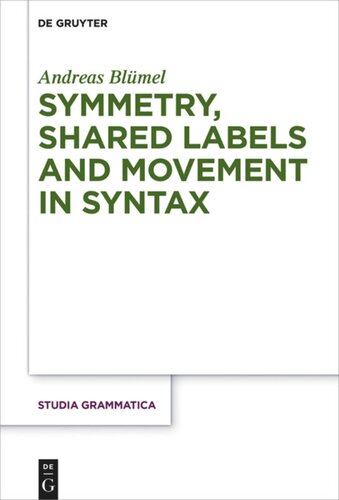

Most ebook files are in PDF format, so you can easily read them using various software such as Foxit Reader or directly on the Google Chrome browser.
Some ebook files are released by publishers in other formats such as .awz, .mobi, .epub, .fb2, etc. You may need to install specific software to read these formats on mobile/PC, such as Calibre.
Please read the tutorial at this link: https://ebookbell.com/faq
We offer FREE conversion to the popular formats you request; however, this may take some time. Therefore, right after payment, please email us, and we will try to provide the service as quickly as possible.
For some exceptional file formats or broken links (if any), please refrain from opening any disputes. Instead, email us first, and we will try to assist within a maximum of 6 hours.
EbookBell Team

4.4
102 reviewsWhat is the trigger for displacement phenomena in natural language syntax? And how can constraints on syntactic movement be derived from interface conditions and so-called Third Factor principles?
Within the Minimalist Program a standard answer to the first question is that it is driven by morphosyntactic features. This monograph challenges that view and suggests that the role of features in driving syntactic computation has been overestimated. Instead it proposes that "labeling" -- the detection of a prominent element in sets formed by Merge -- plays a role in driving transformations, and labeling itself is understood to derive from an interplay of efficient computation and the need for a label at the Conceptual-Intentional systems. It explores this idea in four empirical domains: Long-distance dependencies, Criterial Freezing-phenomena, nested dependencies and ATB-movement. The languages considered include English, German and Hebrew.